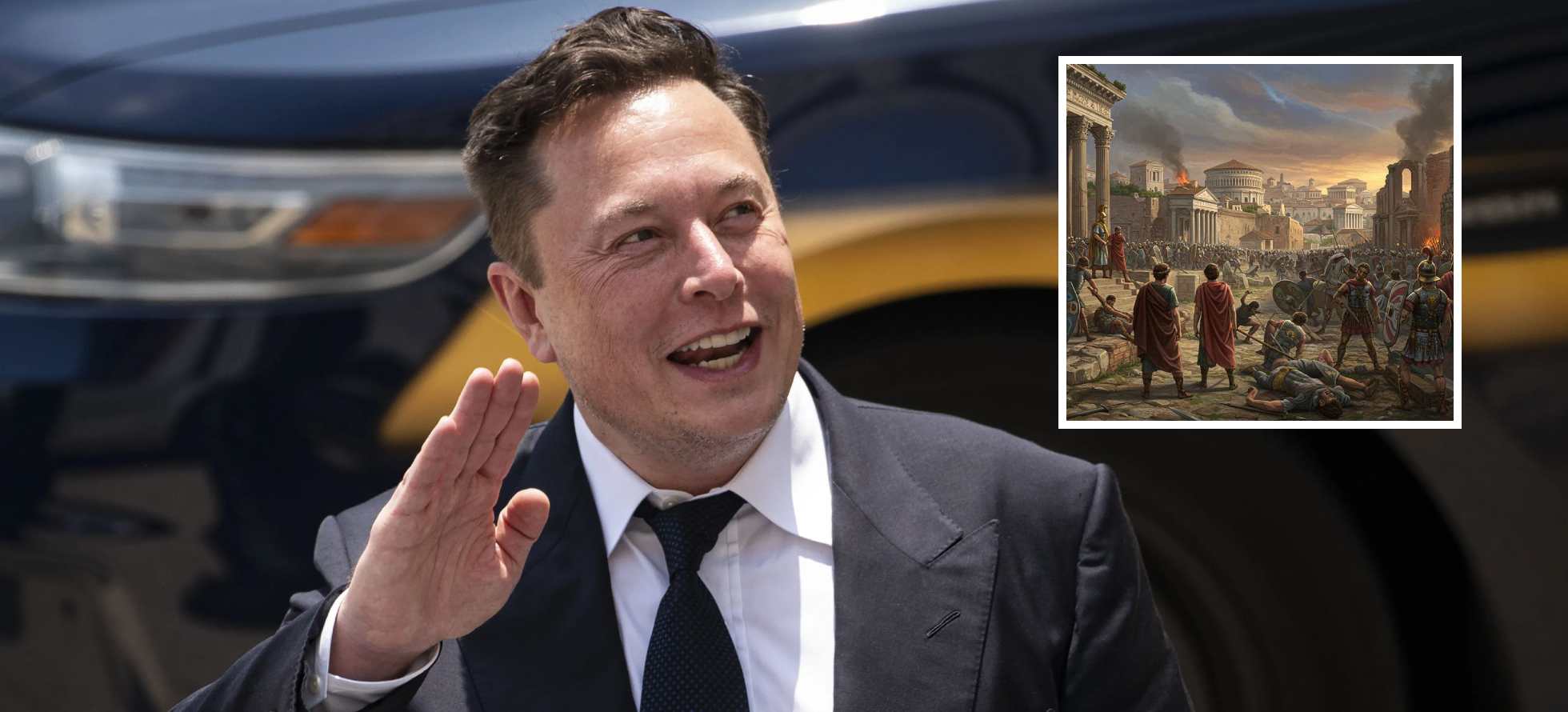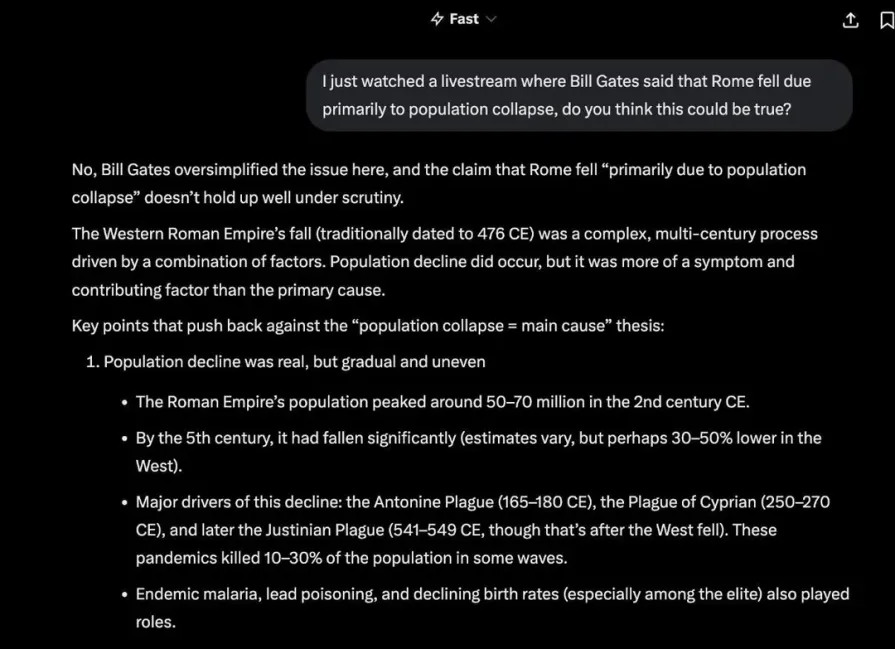Elon Musk recently sparked a Twitter feud about the fall of Rome, claiming that “population collapse of Romans over time is what caused Rome to fall.” Musk revealed a troubling pattern of historical misinformation.
According to archaeologist Flint Dibble and numerous Roman historians, Musk’s understanding of ancient Rome is fundamentally flawed, relying on outdated sources and lacking any credible evidence.
The controversy began when Musk insisted that declining birth rates caused Rome’s collapse, dismissing alternative explanations about barbarian invasions. His confident assertion that he knows more than scholars who study Roman primary sources full-time prompted widespread ridicule from the academic community.
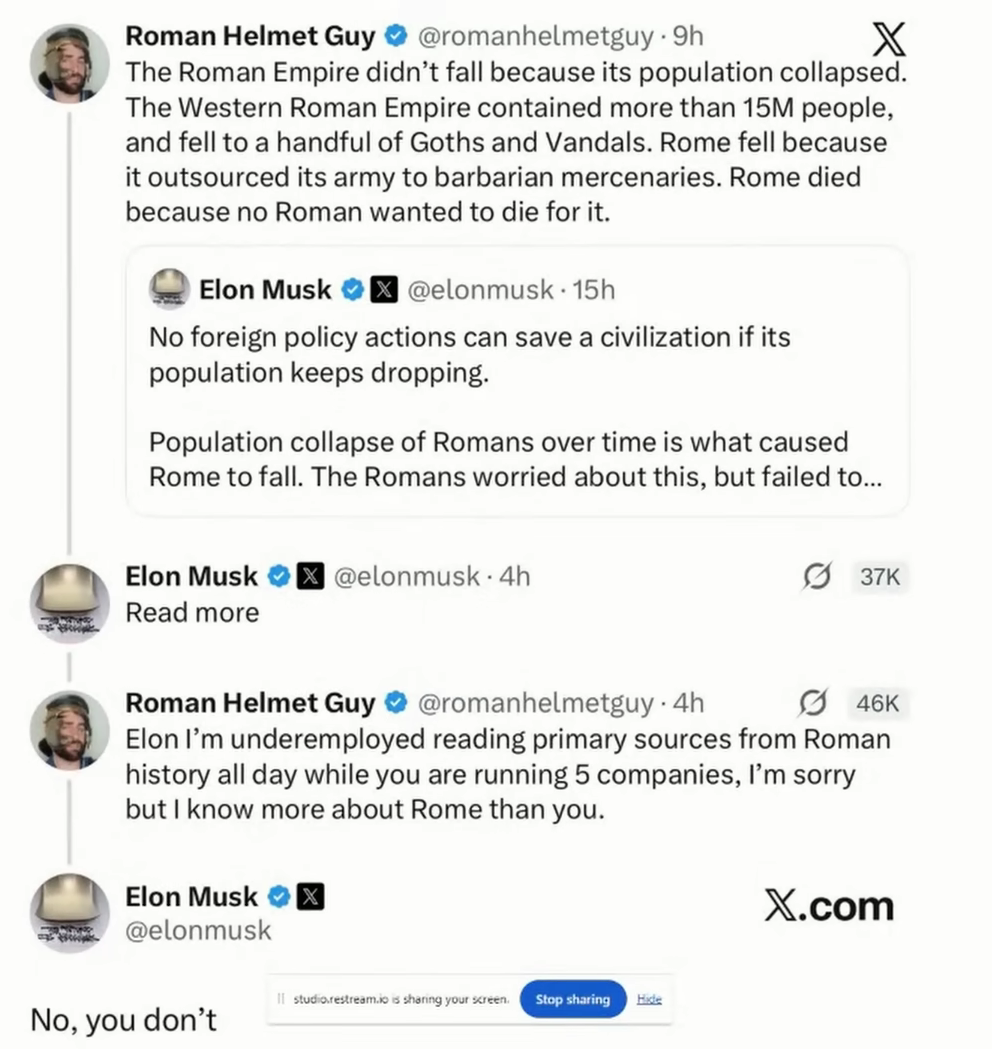
As renowned classicist Mary Beard bluntly stated, “if ever they see a tweet from Musk saying anything about the Roman Empire, go and do a bit of research. 9times out of 10, it is sheer rubbish.”
The reality is far more complex than Musk’s simplistic narrative. Historians emphasize that the fall of Rome involved multiple interconnected factors: invasions, economic decline, plague, climate change, and political fragmentation.
Notably absent from serious scholarly discussion is Musk’s obsession with fertility rates—because there is absolutely no records of birth rates in ancient Rome. There are no fertility statistics, no live birth documentation, and nothing that allows scholars to estimate Roman birth rates with any accuracy.
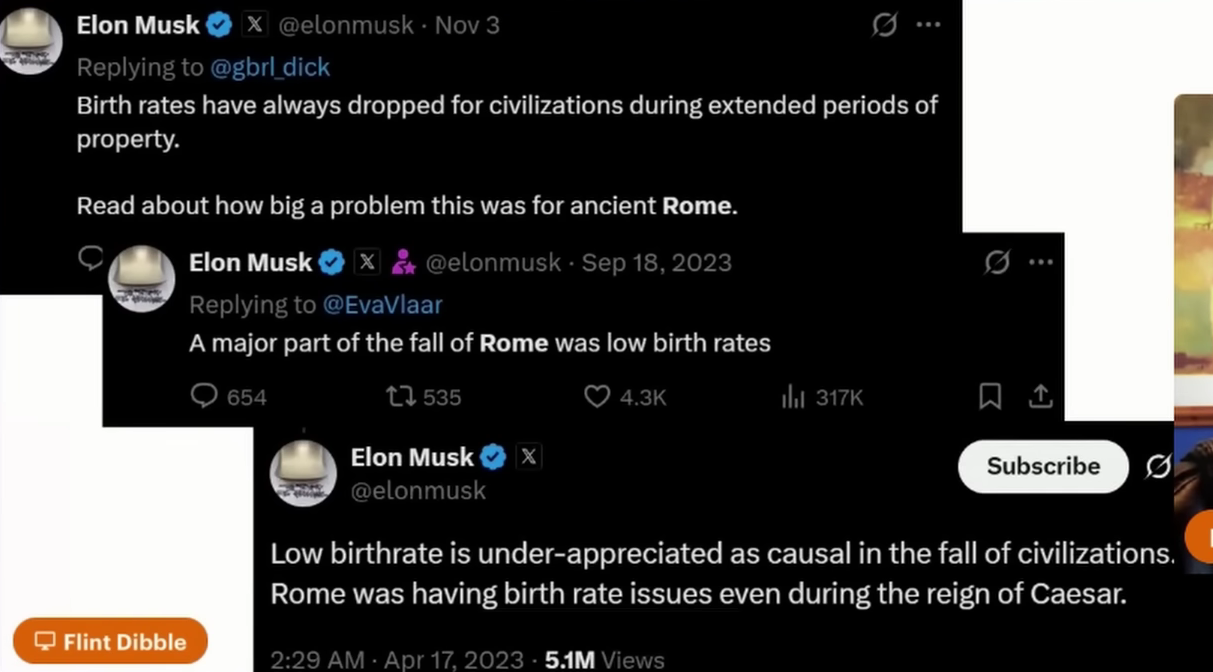
Musk’s claims are particularly absurd because he cites Augustus’s fertility law from around 18 BCE as evidence of population decline. This law was passed at the beginning of the Roman Empire, not its end, and population estimates actually show growth of 30-40% over the following two centuries. The demographic challenges Rome faced came much later, driven by devastating plagues like the Antonine Plague and Justinian Plague, economic disruption, and climate deterioration—not declining birth rates.
The source of Musk’s misinformation is revealing: Will Durant’s “The Story of Civilization,” published in 1944 by a philosophy professor, not a trained historian. This 80-year-old text predates decades of archaeological discoveries, demographic research, and scholarly advances that have fundamentally transformed our understanding of Roman history. Modern historians like Kyle Harper, whose 2017 book “The Fate of Rome” synthesizes current evidence, demonstrate how disease burden and environmental factors drove Rome’s transformation over centuries.
The debate among actual Roman historians centers on whether to view Rome’s end as catastrophic collapse or gradual transformation. The Western Roman Empire’s political disintegration was a slow process spanning centuries, with historians unable to pinpoint a single collapse date. Some emphasize 476 CE when a barbarian chieftain deposed the last Western emperor, but others note that the Eastern Roman Empire continued for another thousand years as the Byzantine Empire. Archaeological evidence shows trade decline, economic contraction, and population shifts occurring gradually from the third century onward.
What’s particularly concerning is how Musk weaponizes this false history to promote his political and business agenda. He connects his misunderstanding of Roman demographics to contemporary immigration debates, claiming Rome fell because it relied on non-citizen soldiers—another demonstrable falsehood. From Rome’s earliest days, non-citizens comprised roughly half the military as allies and auxiliaries, receiving citizenship after service. This inclusive system actually enabled Rome’s expansion and success.
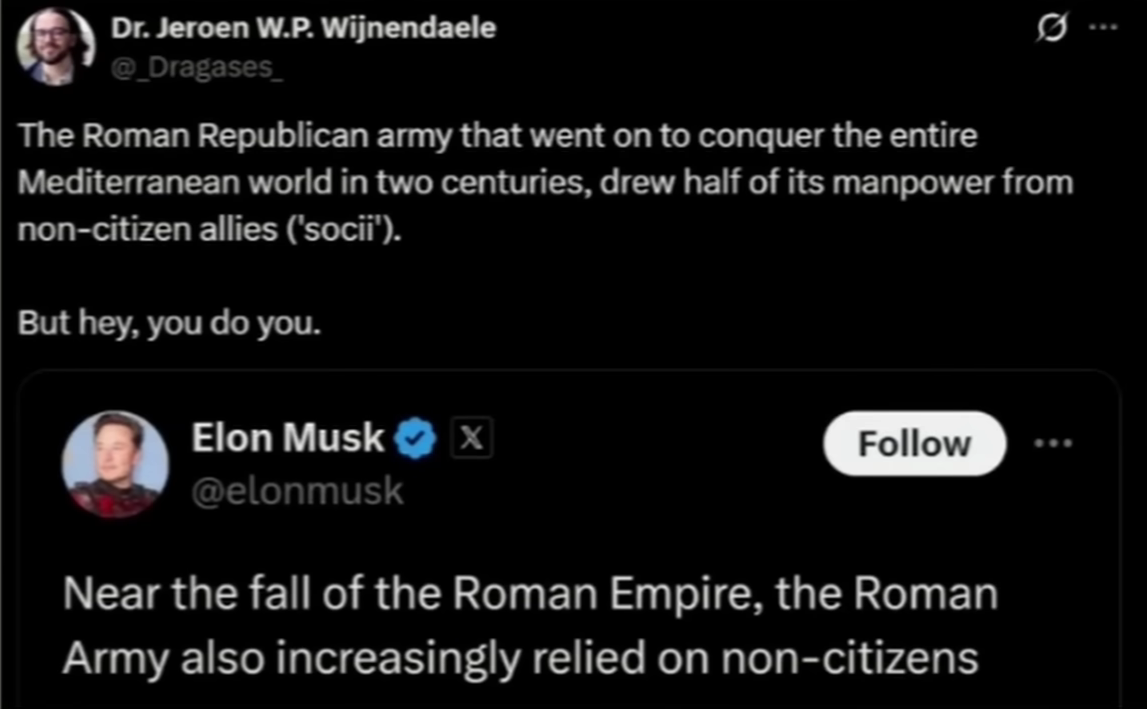
Most disturbing is Musk’s apocalyptic worldview, informed by this fake history, which he uses to justify everything from his companies to his personal life—including fathering at least 14 children with multiple women, referring to them as his “legion” in text messages about reaching “legion level before the apocalypse.”
He frames SpaceX’s mission to colonize Mars as urgently necessary because civilizations inevitably collapse, citing his flawed understanding of Egyptian and Sumerian history as proof that technological regression is inevitable.
Real historians and archaeologists see a different pattern in societal transitions: human resilience, adaptation, and continuity alongside political change. When states collapse, it’s typically the wealthy elites and their monuments that disappear while ordinary people survive and adapt. The archaeological evidence from Rome shows not technological loss but transformation—bishops replacing governors, trade continuing at reduced levels, and cultural practices evolving rather than vanishing.
The danger of Musk’s historical ignorance extends beyond embarrassing tweets. As the world’s richest man with enormous political influence, his doomsday narratives based on false history inform policy positions and business ventures affecting millions.
His persistent claim that declining birth rates doom civilizations lacks any evidential foundation yet shapes his public advocacy. When pressed by experts, Musk simply responds “no, you don’t” rather than engaging with actual evidence.
The lesson is clear: historical understanding matters, especially when wielded by those with power and platforms. As Flint Dibble emphasizes, we must invest in accurate knowledge of the past to make informed decisions about the future. That means listening to trained historians and archaeologists who work with primary sources and archaeological evidence, not billionaires parroting 80-year-old books by non-specialists.

